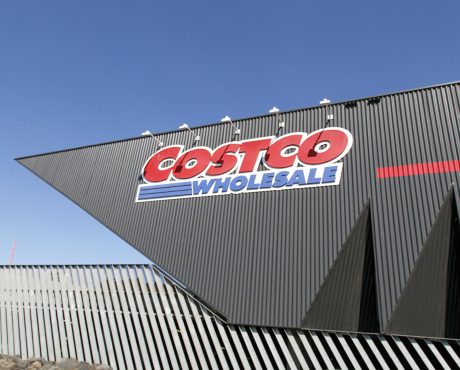Costco Stock Returning Cash to Investors
With an annual yield of just 1.2%, Costco Wholesale Corporation (NASDAQ:COST) is far from being a high-dividend stock. However, the company deserves income investors’ attention for a very simple reason: special payouts.
You see, when a company establishes a dividend policy, it will usually make predetermined dividend payments according to its payout schedule. Most dividend-paying companies distribute on a quarterly basis, but companies can also pay annual dividends, semi-annual dividends, and monthly dividends.
No matter what the payment frequency is, a company’s regular dividend policy can provide investors with a predictable stream of income. And that predictable dividend stream has always been the focus of our analysis here at Income Investors.
However, paying a regular dividend is not the only way through which companies can return cash to investors. Occasionally, they also dish out special dividends.
Case in point: Costco stock paid a $7.00-per-share special dividend in 2012, a $5.00-per-share special dividend in 2015, and another $7.00-per-share special dividend in 2017. (Source: “Splits & Dividends,” Costco Wholesale Corporation, last accessed May 7, 2018.)
To put it in perspective, Costco’s regular quarterly dividend rate stands at $0.57 per share at the moment. A special dividend of $7.00 per share would be a huge payout to shareholders, compared to what they normally receive.
Of course, as the name suggests, special dividends are expected to be one-time payments. But based on what Costco has been doing, the company is more than ready to deliver another special payout to COST stock investors. Let me explain.
A Growing Business
The first thing to note is that, despite being in the retail industry, Costco’s business has been firing on all cylinders.
According to the company’s latest monthly sales report, Costco generated net sales of $12.9 billion for the month of March, representing a 10.9% increase year-over-year. Comparable sales, a critical measure of a retailer’s performance, grew 8.6% from the year-ago period. (Source: “Costco Wholesale Corporation Reports March Sales Results,” Costco Wholesale Corporation, April 11, 2018.)
Note that in March, comparable sales increased at all of Costco’s three segments (U.S., Canada, and Other International).
The company’s booming business has translated to growing financials. According to Costco’s most recent earnings report, net sales for the second quarter of its fiscal-year 2018 increased 10.8% year-over-year to $32.3 billion. (Source: “Costco Wholesale Corporation Reports Second Quarter And Year-To-Date Operating Results For Fiscal 2018 And February Sales Results,” Costco Wholesale Corporation, March 7, 2018.)
The bottom line was even more impressive. For the quarter, Costco generated net income of $710.0 million, or $1.59 per diluted share. This was a huge improvement from the net income of $515.0 million, or $1.17 per diluted share, earned in the year-ago period.
Thanks to rising profits, the company has been raising its dividends. In fact, since Costco established its regular dividend policy in 2004, it has increased its quarterly dividend rate every single year.
The latest dividend hike arrived last month, when the company’s board of directors declared a quarterly cash dividend of $0.57 per share. The dividend was a sizable 14% increase from its previous quarterly payout of $0.50 per share. (Source: “Costco Wholesale Corporation Announces An Increase In Its Quarterly Cash Dividend,” Costco Wholesale Corporation, April 24, 2018.)
Room for Another Special Payout?
The neat thing is, despite those dividend increases, Costco wasn’t really paying out all that much.
In the first half of Costco’s fiscal-year 2018, the company generated net income of $3.04 per diluted share. Considering that it declared total cash dividends of $1.00 per share, Costco’s payout ratio comes out to just 32.9%.
In other words, the company was paying out less than one-third of its profits. Such a conservative payout ratio not only leaves a wide margin of safety, but also gives Costco the possibility of paying another special dividend.
Don’t forget that Costco is positioned to benefit from the new tax reform. In fact, approximately $74.0 million of the company’s year-over-year profit growth in the second fiscal quarter was due to the new tax laws. As the company keeps realizing those benefits, it may want to return some of the profits to investors through a one-time payout.
At the end of the day, keep in mind that Costco is a unique player in the retail industry. While the company operates brick-and-mortar stores, its membership-only business model has allowed it to amass an incredibly loyal customer base. In the U.S. and Canada, Costco members have an average renewal rate of 90%. (Source: “2nd Quarter FY 2018,” Costco Wholesale Corporation, February 8, 2018.)
Today, Costco has 92.2 million total cardholders, representing 50.4 million households. This means that, every year, the company can make $3.1 billion just from the cash membership fees.
With a solid business model, growing financials, and a low payout ratio, Costco’s next special dividend payment may arrive sooner than you think.
